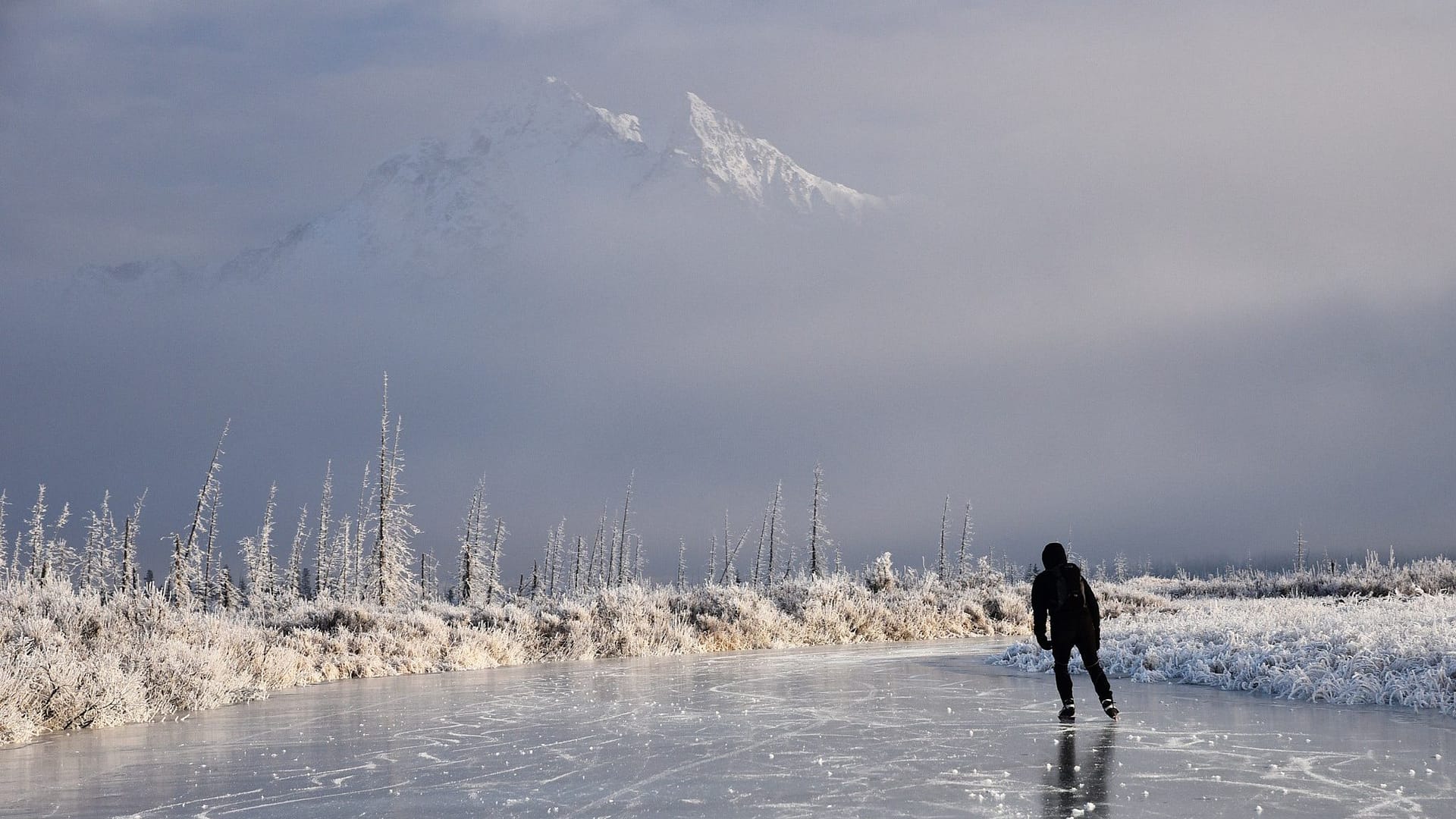When fall turns to winter, and the dropping temperatures turn lakes, ponds, and rivers to ice, most of us will wait until the ice is more than a few inches thick before daring to step foot on it. But that’s not the case for these bold and mathematically-minded ice skaters! They redefine “skating on thin ice.”
Yes, in some places, skating on thin ice—sometimes as thick as just two inches—is a beloved pastime. And, though those with the right training should only pursue it, this is a sport that’s as bewitching to watch as it is to hear!
You read that right: hear. Skating on thin ice is an art form that combines the seemingly disparate worlds of sound, nature, mathematics, and athleticism!

A Symphony on Thin Ice
Sometimes called Nordic Skating or Wild Ice Skating, skating on thin, pristine black ice is a skill that requires an appreciation for mathematics, nature, and even harmonics.
It doesn’t just take skill to navigate these wild terrains. It takes a finely tuned ear to listen for the subtle changes in the sounds of the ice and be able to react to them. Athletes use their knowledge of the conditions, as well as the sound the ice makes as they glide over it, to determine if the ice is safe to skate over. The higher the pitch, the thinner it is!
Mathematician Märten Ajne is the world’s leading expert on thin ice skating. The sport, for him, combines his love of nature and mathematics as he searches out landscapes to skate in some of the world’s most beautiful places.
We’ll start with this beautiful video from National Geographic to give you an idea of how incredible this sport looks and, most importantly, sounds. Make sure you have your volume up or your headphones in for this one!
What’s that noise?
The sound you hear as he skates over the ice is from cracks forming and sending vibrations over the ice!
Those who have spent time by a lake or body of water as it freezes might be familiar with these noises that sound straight out of a Star Wars film. The ice naturally makes these sounds as it expands and contracts with temperature change. 2
There’s some cool acoustic science behind those noises! For a quick explanation, here’s a video from one of our favorite YouTube channels, NPR’s SkunkBear.
If you haven’t yet, go check out SkunkBear! They are one of our favorite science YouTube channels, and they do an amazing job explaining questions related to all sorts of science-related things.
Oh, and if you want to learn more about those ice instruments they mentioned at the beginning, we’ve got an article for you to explore!
So, back to the skating!
When Märten Ajne started skating on thin ice, there was very little research out there about it. What did those sounds mean? How is it possible for a human to glide across something so thin and presumably brittle?
After years and years of skating, he found that the arch shape of the ice helps to support him and that the flex of the ice helps disperse his weight. And as for the sounds, well, if he hears the ice approaching high C, he knows he’s in the danger zone.
For more on what one can learn after 40 years of skating on thin ice, here’s Ajne himself in a great piece from Great Big Story.
“I love skating for the excitement and challenges it brings. It’s an opportunity for math and nature to come together and make it understandable for me.”
—Märten Ajne
Rarely do we hear about mathematics and nature working together. And yet, they are so deeply intertwined. From the sounds we hear to the structures of plants, the world of mathematics, physics, and nature are constantly at play together! Look deeply enough at a leaf, listen closely enough to ice, observe a waterbug walk on a pond’s surface, and suddenly, you’ll see the mathematical and natural worlds collide.
From a very young age, we start asking questions about the world around us. We learn science, mathematics, and physics in school, and maybe beyond a biology lesson here and there. But we rarely apply them to nature. What could we see or hear more intricately if we were to observe the world with a little more mathematics or physics? How could we teach young people differently with this approach?
Whether we’re skating on thin ice, hiking our favorite trail, or sitting by our favorite pond, what can we observe with a little more curiosity?
Stay beautiful & keep laughing!
-Liesl

Don’t miss out on a single article!
Enjoy unlimited access to over 500 articles & podcast that give you a positive perspective on the state of the world and show you practical ways you can help.
Notes:
- National Geographic. “Hear the Otherworldly Sounds of Skating on Thin Ice | National Geographic.” YouTube, National Geographic, 9 Feb. 2018, www.youtube.com/watch?v=v3O9vNi-dkA. ↩
- Potenza, Alessandra. “This Is What a Frozen Lake Sounds Like.” The Verge, The Verge, 15 Jan. 2017, www.theverge.com/2017/1/15/14253688/frozen-lake-sound-star-wars-acoustics. ↩
- NPR’s Skunk Bear. “What Makes Frozen Lakes Sing?” YouTube, YouTube, 21 Dec. 2016, www.youtube.com/watch?v=OC7_zpyqCrU. ↩
- Great Big Story. “Using Math to Skate On Thin Ice.” YouTube, Great Big Story, 11 July 2019, www.youtube.com/watch?v=WQXLsegiA7g. ↩








